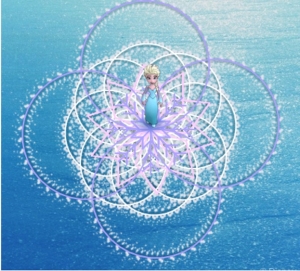http://pinepoint.nfb.ca/#/pinepoint
Story elements:
Events – Pine Point is the story of a town. A town that no longer exists and was wiped off the face of the earth. It now only lives through the memories of the people that once belonged there. The story is told through their memories, through the photos, through the news events that took place there. The web documentary takes us through what the town stood for, what it meant to people, the kind of people that existed there and what lead to it’s final closure. It is a look into the town history, the people, the present of those people, the crash of Cosmos 954, the work available in town, the souvenirs which include the photos and videos, the weirdness of how the closure of town was went about and finally what remains today and how people pay their memories a visit every now and then.
Actors – The characters here are a few of the people who were the last to grow up in the town of Pine Point before it shut down. They include the beauty of town, the muscle, the brothers etc. The narrator is someone who did not belong to the town but is a link between everyone now in the present.
Time – The events start in the past when the town existed and run into the present showing the viewer what remains now.
Place – The town of Pine Point. In Pine Point school, hotel, ice ring, etc.
Narrative elements:
Ordering – The events occur in a chronological fashion mostly as we go from what the town was to what remains. Flash backs are shown through the memories and left over footage collected over time in the town.
Pace – The documentary covers various years in about 40 minutes give or take. It touches on the main and most important events and hence, I would say is fast paced.
Focalization – The point of view is through the eyes of an undefined character who might have belonged to the town.
Narrator – The narrator is representing the people of the town. He sounds like an insider but is an outside. He is very reliable as everything he says, through copy only, is backed with images, drawings by people from the town or consensus and research which is very apparent throughout the documentary. He creates an atmosphere of belonging with his attitude of obviousness, which makes the audience more involved emotionally in my opinion.
Text – It is an interactive, graphic digital narrative project created as a website.
Traditional narrative features:
Linearity – The project is mostly linear recounting the way things happened as Pine Point came to it’s end. Every now and then, the narrator jumps into the present but goes back to where he left off.
Series of conflicts that leads to a climax and resolution – The lack of ore resources for mining creating lack of jobs, the crash of Cosmos 954, the burning of the high school and the increase in problems like alcoholism, marital break ups etc., leading to the choice of the government to close down the town.
Protagonist and antagonist – The protagonist here is the town itself – Pine Point. The antagonist is the government who close it down, sending letters to people containing consensus that they wouldn’t know existed, and making them move out.
Three-act structure – Act 1: An existence of a town, doing fine, with it’s ups and downs. Act 2: People leaving, conflicts, school burning, crashing Cosmos 954. Act 3: Closure of town and the memories and way of celebrating it today.
Heroes journey – The hero being the town, through the ins and outs of various life that existed there.
Digital narrative features:
Numerical coding and modularity – This webdoc has a lot of features like animation, graphics, sound, film, photography, scripting, coding and designing etc., which would require a pretty big team of people with collaborations between various professionals.
Variability – Though the webdoc is very interactive in nature and there is a lot every viewer can do and find out, the end result of the documentary is not variable and will be the same every time.
Programmed elements – Interactive maps, timelines, photos, animated characters, videos, animation of the town itself, etc.
Participatory aspects – It is very interactive and every slide has a lot of things that a reader or viewer can do. From clicking buttons to move stuff around or reveal what a drawing means or even explore a township to shuffling through photos and videos of the people of the town. It is participation to find out more over participation to leave your own thoughts behind.


